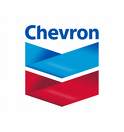Fleet Management Information for Sweeping Professionals |
What You Need to Know About Ultra Low Sulfur Diesel and Emissions ChangesUltra low sulfur diesel will soon be the norm. Make sure your fleet is ready.by Jim Larko, principal, Katsam Enterprises, Inc. The U.S. Enviromental Protection Agency (EPA) has developed regulations to significantly reduce the levels of exhaust emissions in diesel engines. In 2007, the goal of these regulations is to reduce the exhaust levels of NOx (Nitrogen Oxide) by 95 percent and particulate matter by 90 percent. Additionally, the EPA has implemented new diesel fuel requirements regarding sulfur content to meet the new emission standards. Truck and engine manufacturers are making changes to address the emission standards by developing new engines and exhaust after treatment technologies. Oil companies are also developing new oils to work with the technologies. First the diesel fuel changes. Terminals must make 15 parts per million, (ppm) Ultra-Low Sulfur Diesel (ULSD) fuel available by September 1, 2006. Many are already pumping this or a mixture. Terminals will not be required to provide both Low Sulfur Diesel (LSD) 500 ppm which is what most currently use, and the ULSD. All 2007 and newer on-highway diesel equipment will require ULSD. It is very important to know what your supplier is providing to you. By June 1, 2010 all on – road diesel fuel will be 15 ppm sulfur content. The USLD does not have the lubricity qualities of the current low sulfur diesel. You should talk with the supplier to make sure what you are getting at the pump is what you need to protect your engines. Most suppliers are putting in lubricity additives. What does this mean to you as the end consumer on current equipment?

Chevron Oil was a major provider of information for this summary. |
© 2005 - 2021
|
Back to Fleet Management InformationSite Map / Table of Contents |